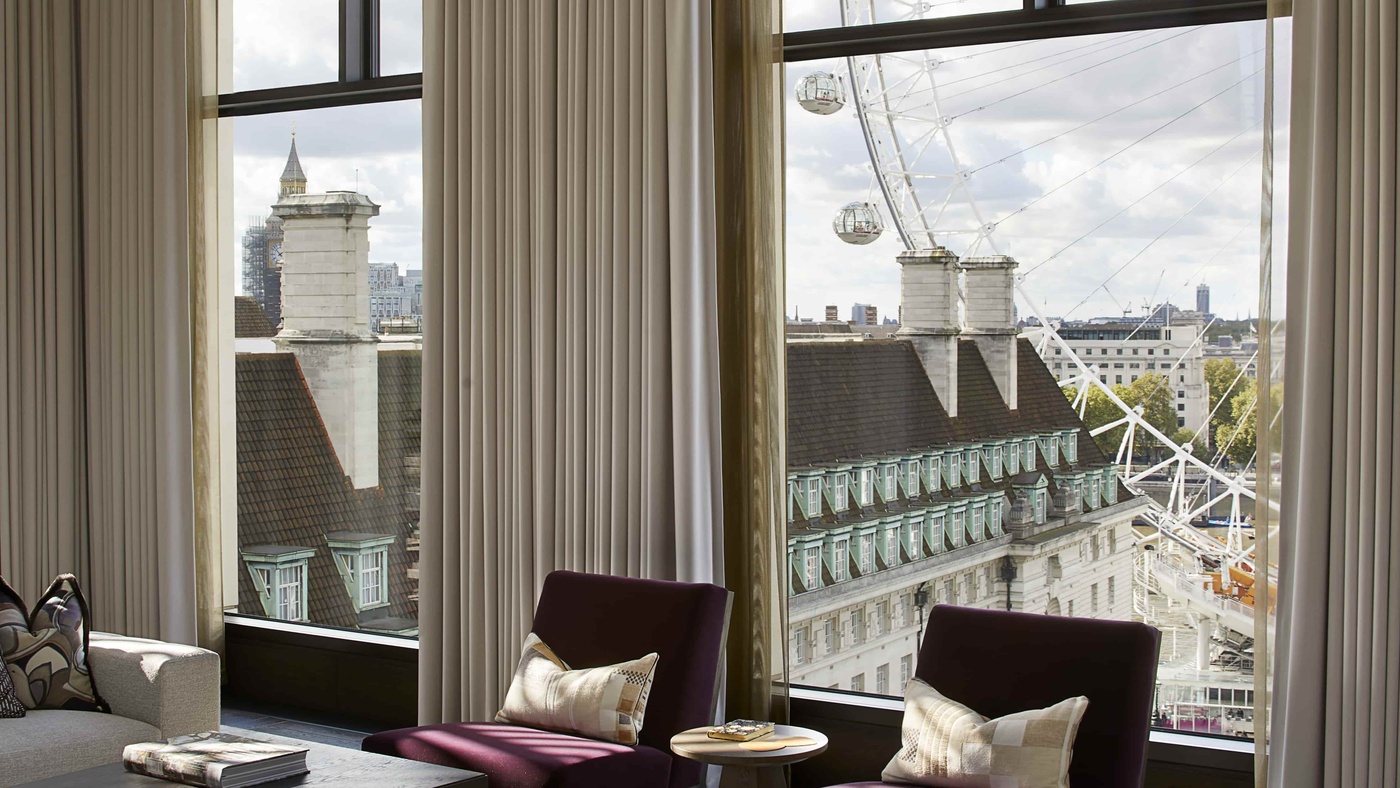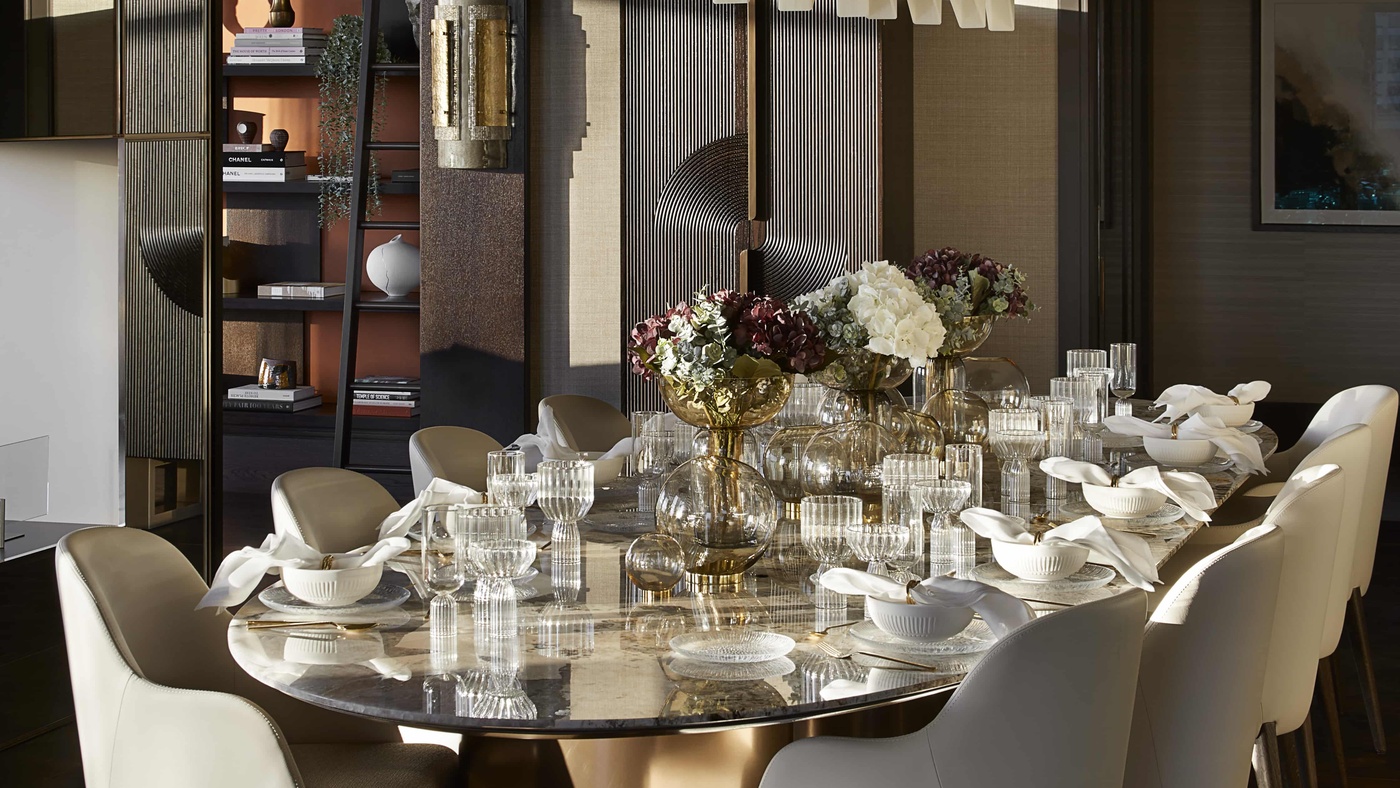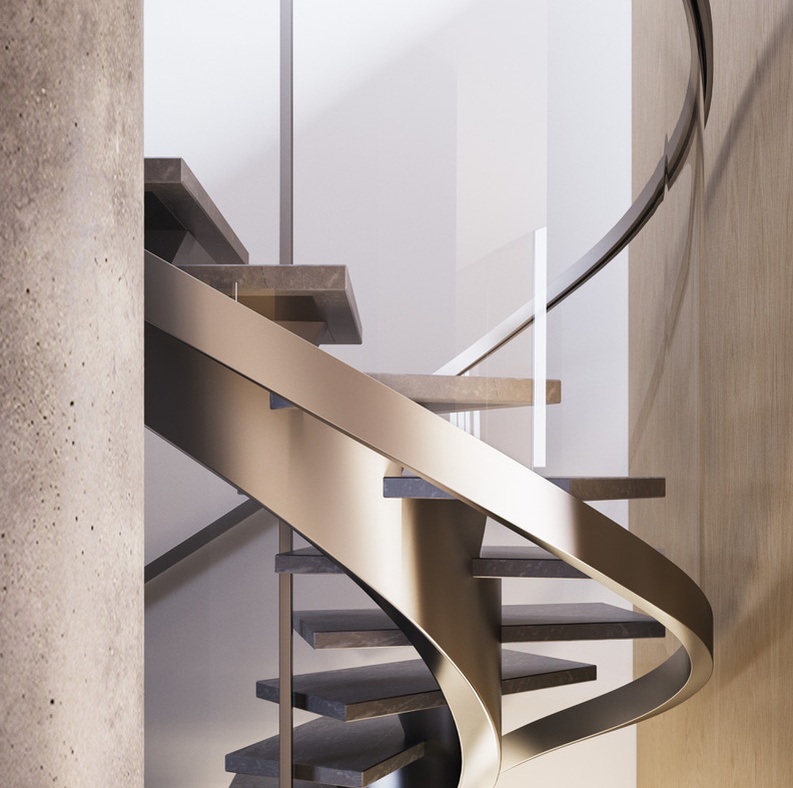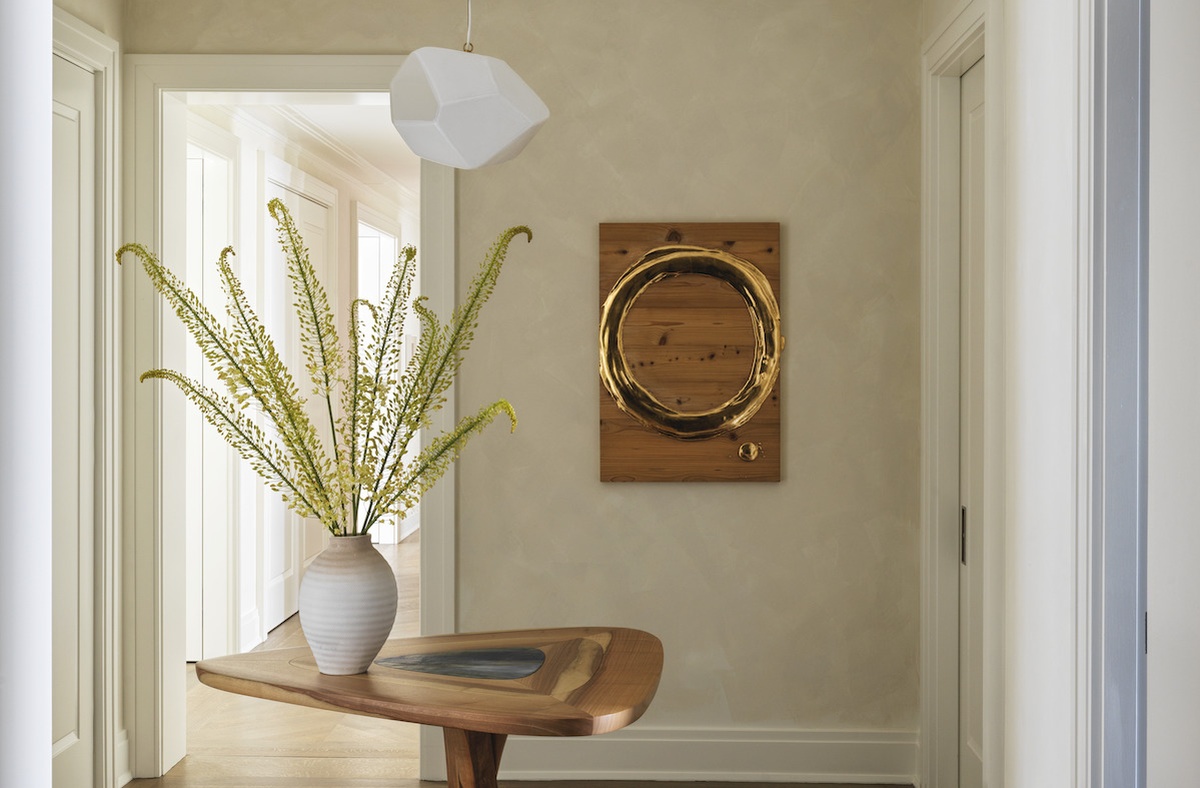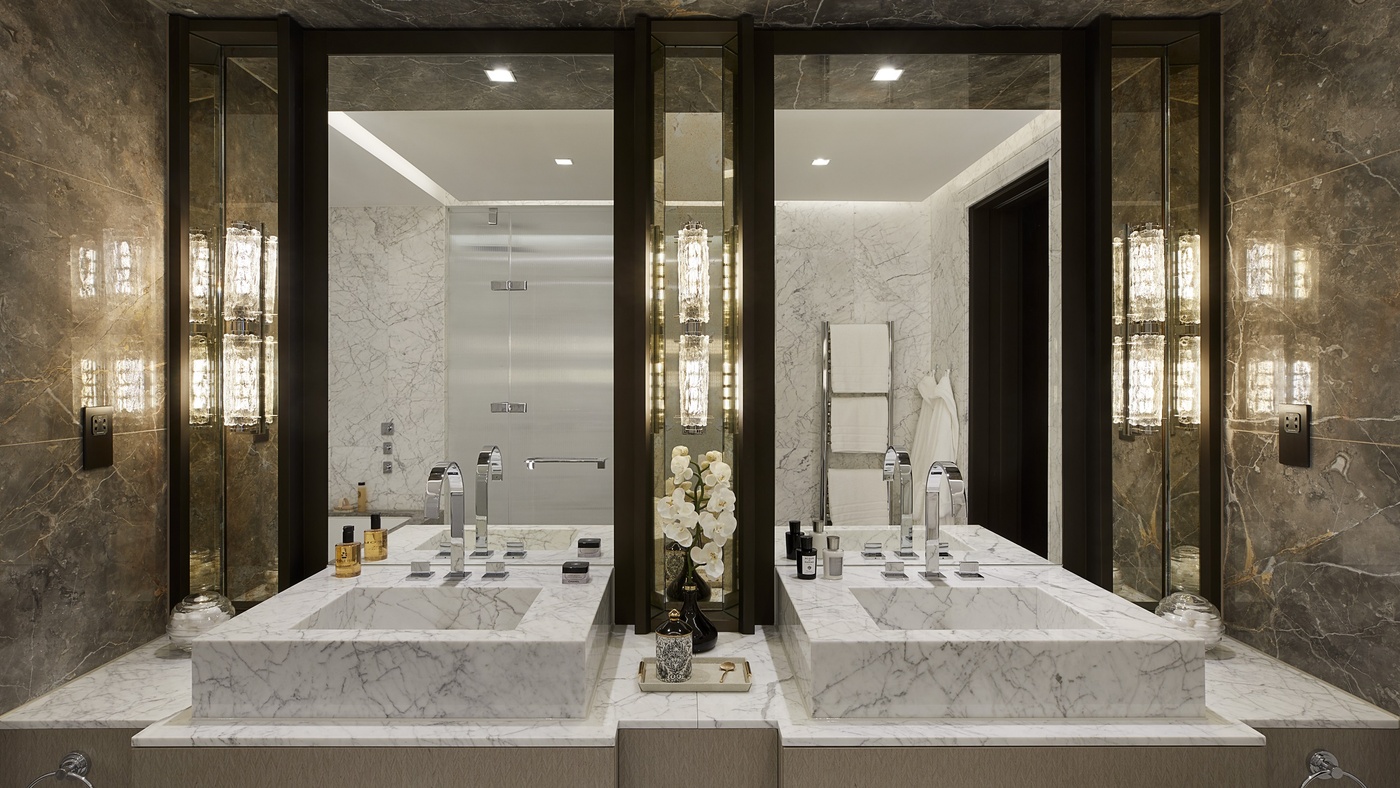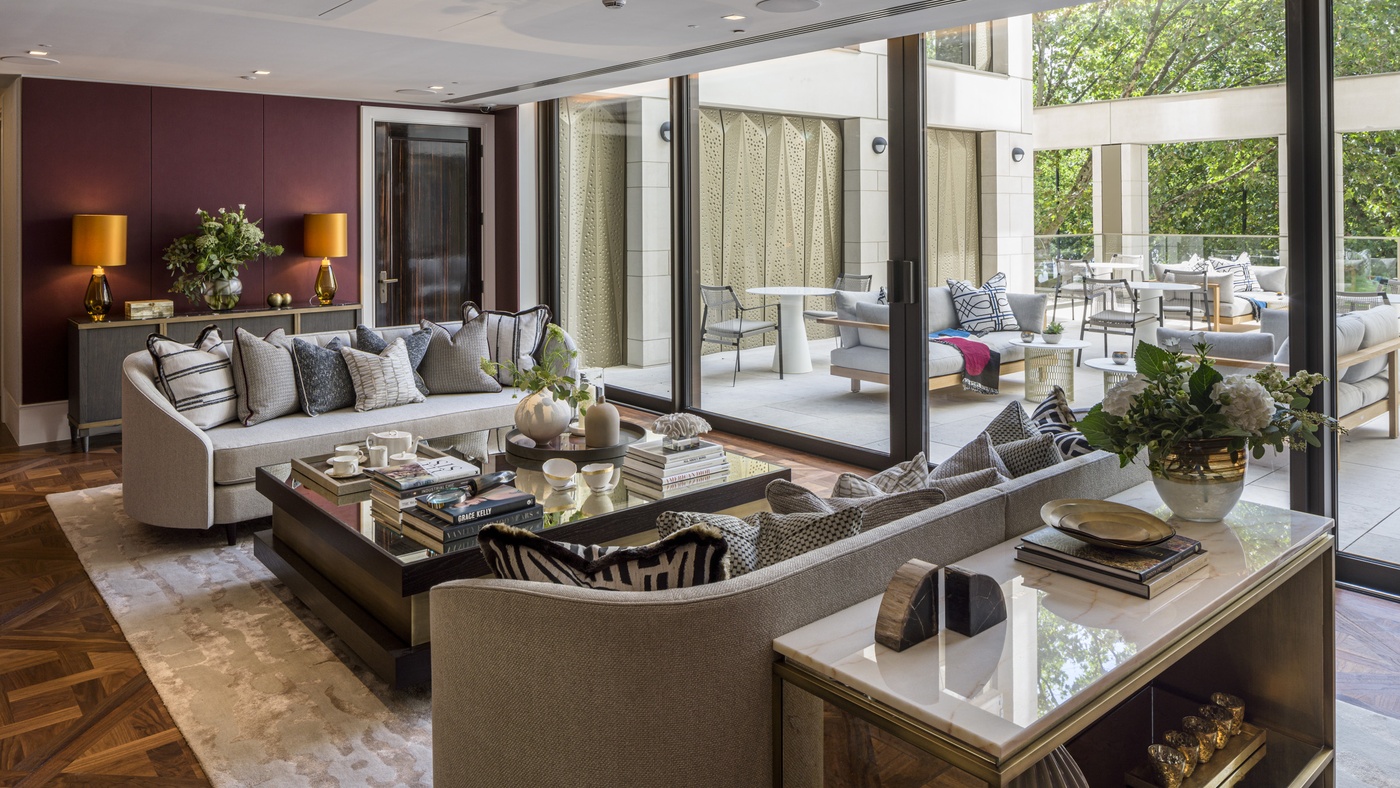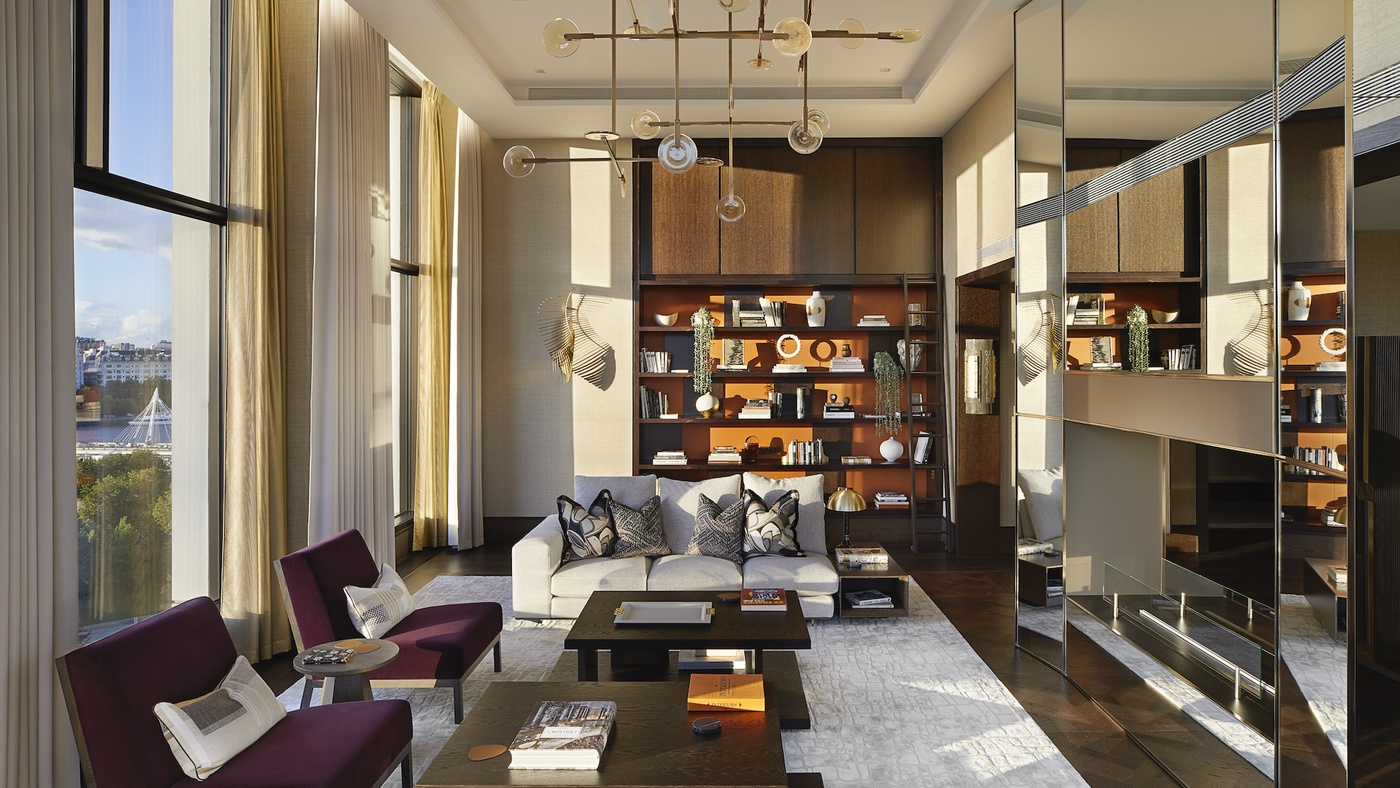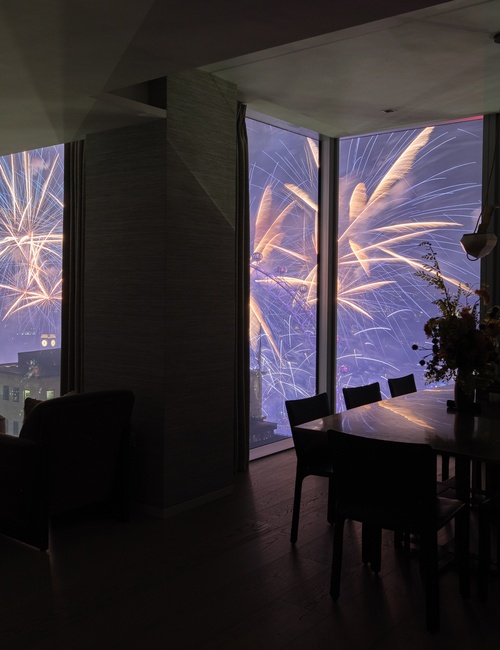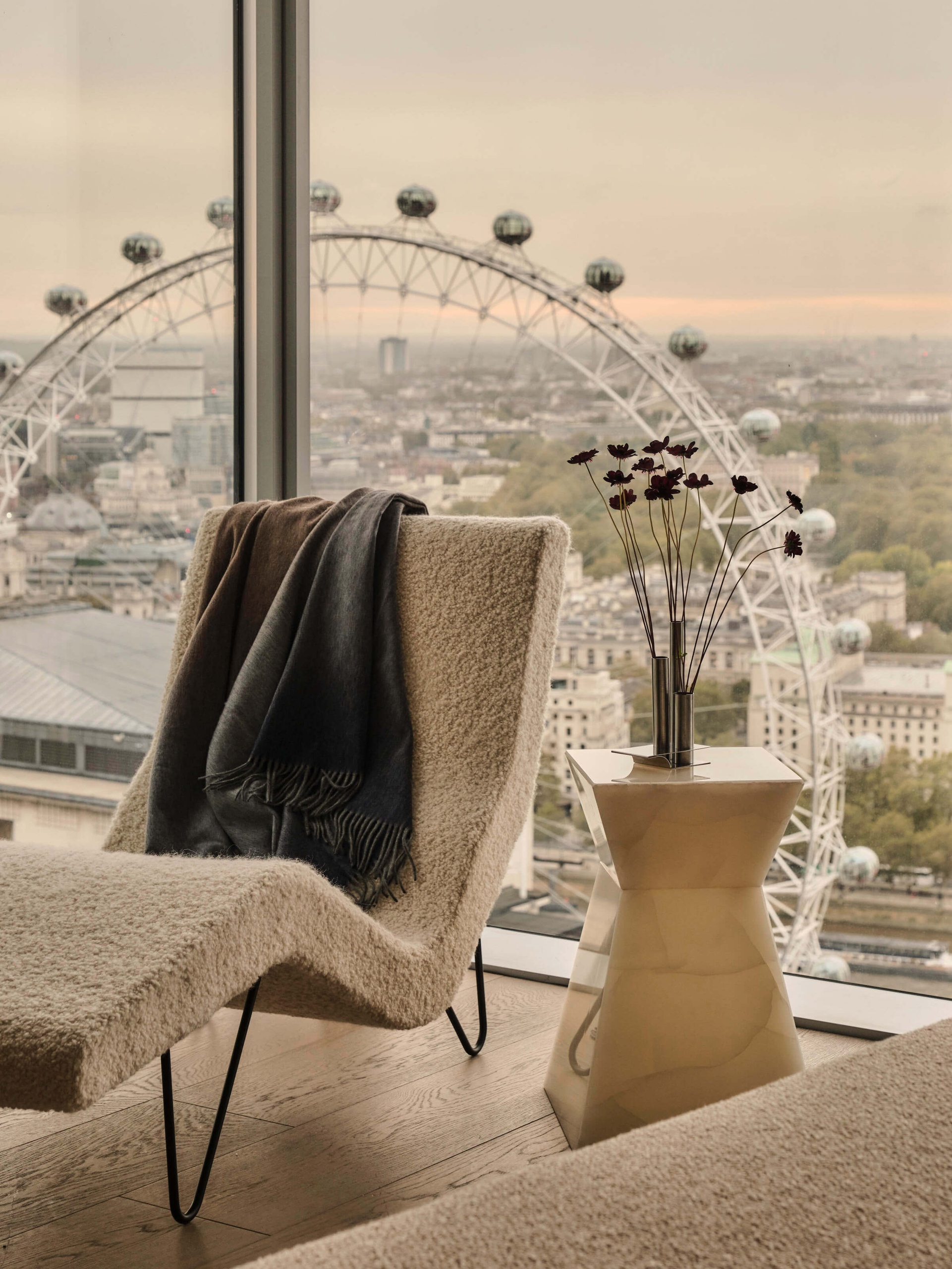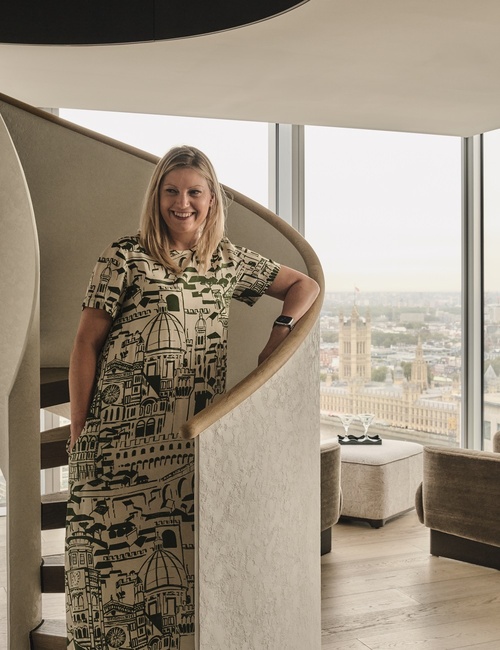“In some cases, we purchase all the inventory from various showrooms and makers we have special connections with,” says Coutheillas. “In others, we may work with a world-renowned design gallery who rents us their pieces for the residence and makes them available for sale to visitors.” For the Belnord, he paired up with Evan Snyderman at R + Company to curate pieces for the model residence. These include “an incredible Haas Brothers mirror that adds a sense of whimsy to the very classic space,” Coutheillas adds.
For 101 on Cleveland, Arko trawled vintage shops and Kempton Park Market. There’s a lounge chair by Vittorio Dassi, a brass table lamp by Willeke Leuchten (both from the 1960s), and Brazil-born Fernanda Calvão’s painting, Bananinha. The shelves contain first editions from the collection of the late impresario Michael White.
These show homes are designed with attention usually devoted to a tasteful, well-heeled client, with artwork, art objects and furniture and of different periods and styles.
But how do the designers put these looks together? A popular route is to mix up sources, borrowing or buying art and other items from galleries and dealers, scouring antiques shops and fairs, and even commissioning pieces.
In the experience of Sheppard, developers rarely purchase art, instead collaborating with artists and dealers to get pieces on loan. It’s a similar situation with some furniture, whether vintage, antique or new.
For artwork at Gabellini Sheppard’s 152 Elizabeth Street in New York, the developer Sumaida + Khurana brought in Yossi Milo Gallery, which specialises in contemporary photography. Meanwhile, the central piece of furniture is a solid walnut Nakashima dining table, sourced from Nakashima Woodworkers, which Sheppard describes as a future heirloom piece.
At the penthouse of Canary Wharf Group’s Belvedere Gardens on London’s South Bank, Goddard Littlefair took a different approach, going to a one-stop shop for bespoke art. “People who have this level of wealth go to all the best stores and fairs, so we want to be able to offer something unique,” says Littlefair.
Studio Graphite is a multi-disciplinary art studio which creates artwork collections for interior spaces. The design firm gave them a creative brief, which took account of the colour scheme and dominant pieces of furniture. The aim was to create the feeling of someone collecting. “Loaning art is very difficult from galleries – you’re paying rent, and the developer can’t sell it on with the apartment,” says Littlefair. “Sometimes, I’ve trawled the Affordable Art Fair and mixed up suppliers. It can be hit and miss, and timescales and budgets don’t always allow for this way of doing things.”
